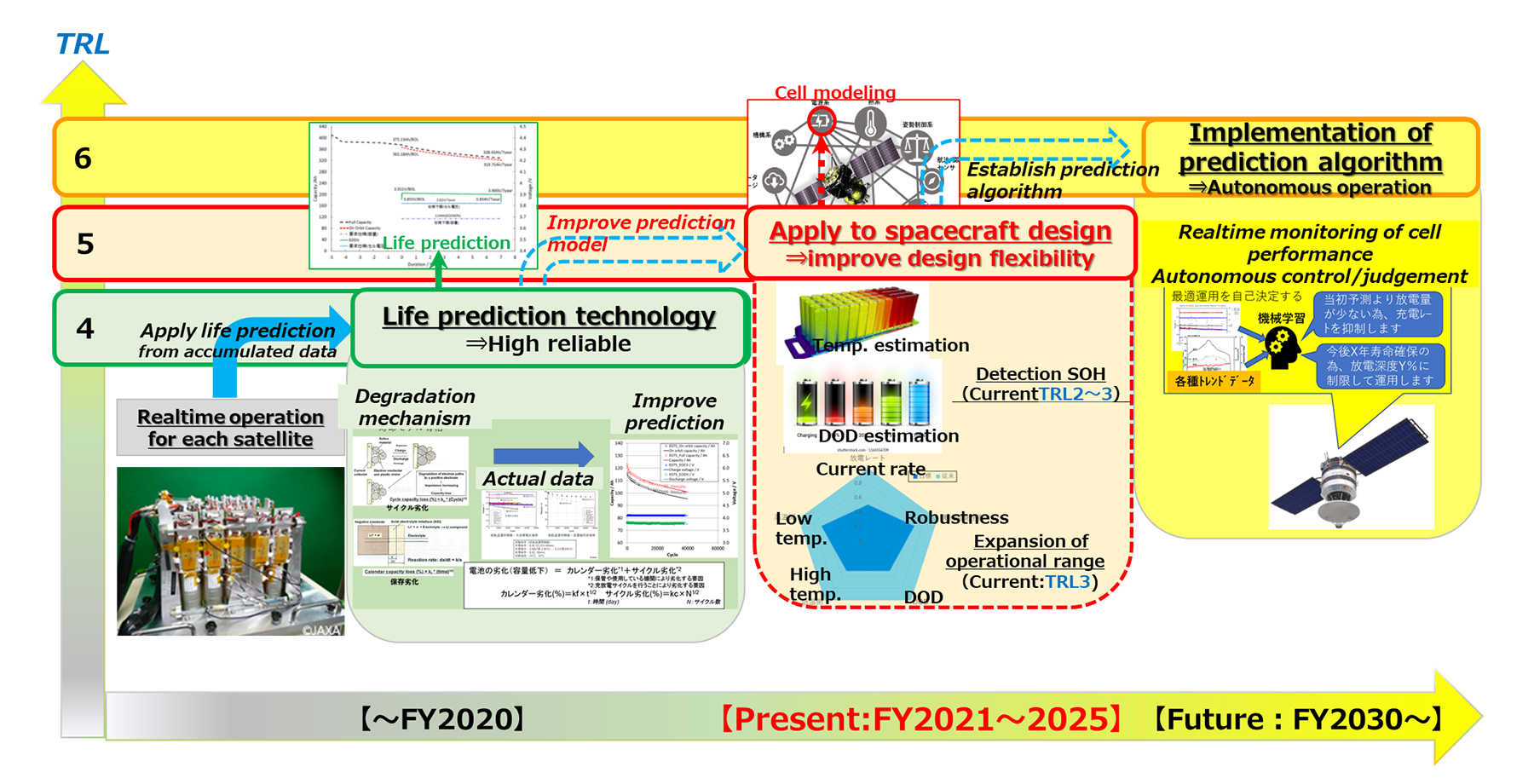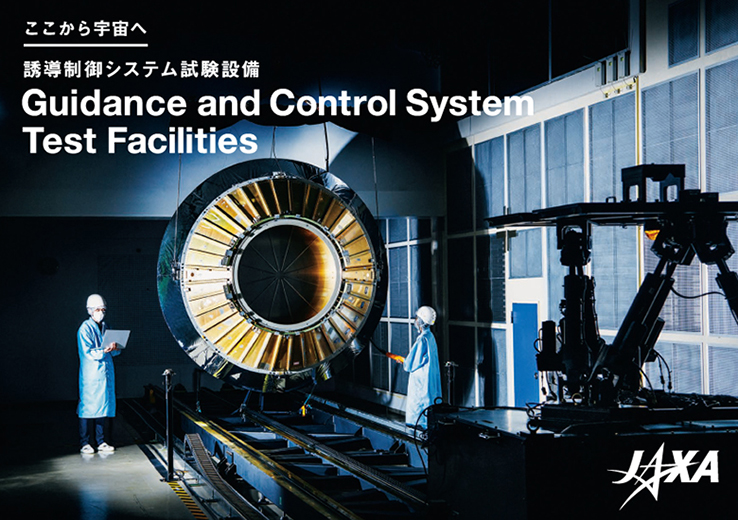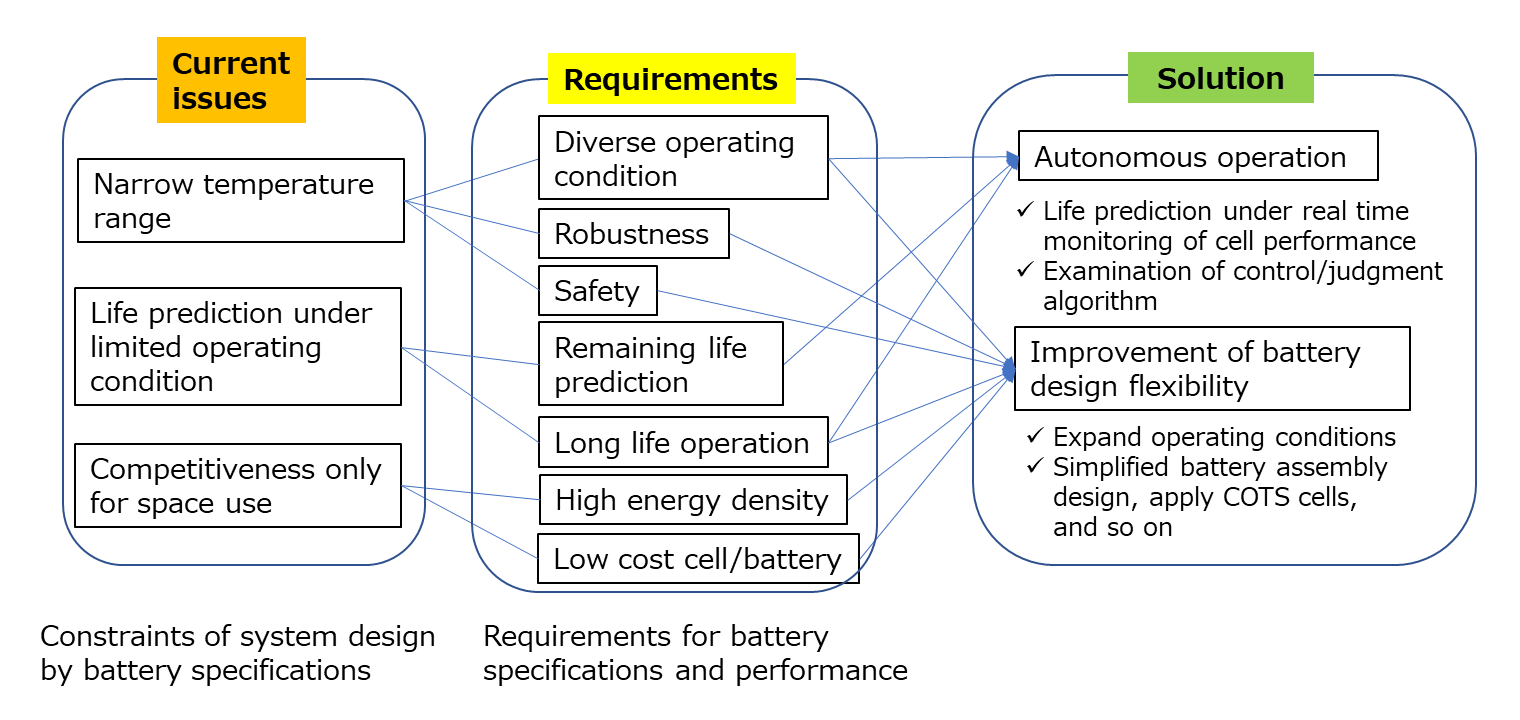Research task
Examples of issues to be addressed in this study include
Expansion of battery operating temperature range
In spacecraft, batteries are temperature-controlled within ±3°C of the set temperature. This temperature control is a burden on the thermal design of spacecraft, especially in exploration activities, which require a response to the balance of heat dissipation and retention. In this research and development project, we aim to expand the temperature range for satellite applications by 10°C better than conventional spacecraft batteries, and for exploration applications, to expand the operating temperature range from -20°C or lower to +40°C or higher.
Mitigation of battery discharge
Low Earth orbit satellites must withstand tens of thousands of charge-discharge cycles and operate for more than seven years (more recently, 12 years). Therefore, the battery's depth of discharge (DOD) has been set at 25% as the upper limit to ensure a long operating life. This operational limitation has resulted in a large supply of battery power for activities. Therefore, we are working to reduce the DOD to 40% or more and improve the output performance to minimize the number of batteries required.
Advanced Lifetime Prediction Technology
For spacecraft, which are difficult to repair or replace after launch, there is a need for improved gauging of battery life with degradation factors. In particular, the recent increase in opportunities for late-stage and secondary use of satellites has made it necessary to improve the accuracy of end-of-life estimation. We are also working to enable more accurate prediction by collecting information directly from operating batteries instead of predicting the battery status from ground tests.
Based on the results of long-life research and the above efforts, we will achieve a technology maturity level of TRL5 during this research period and acquire technology that can be applied to spacecraft design.










